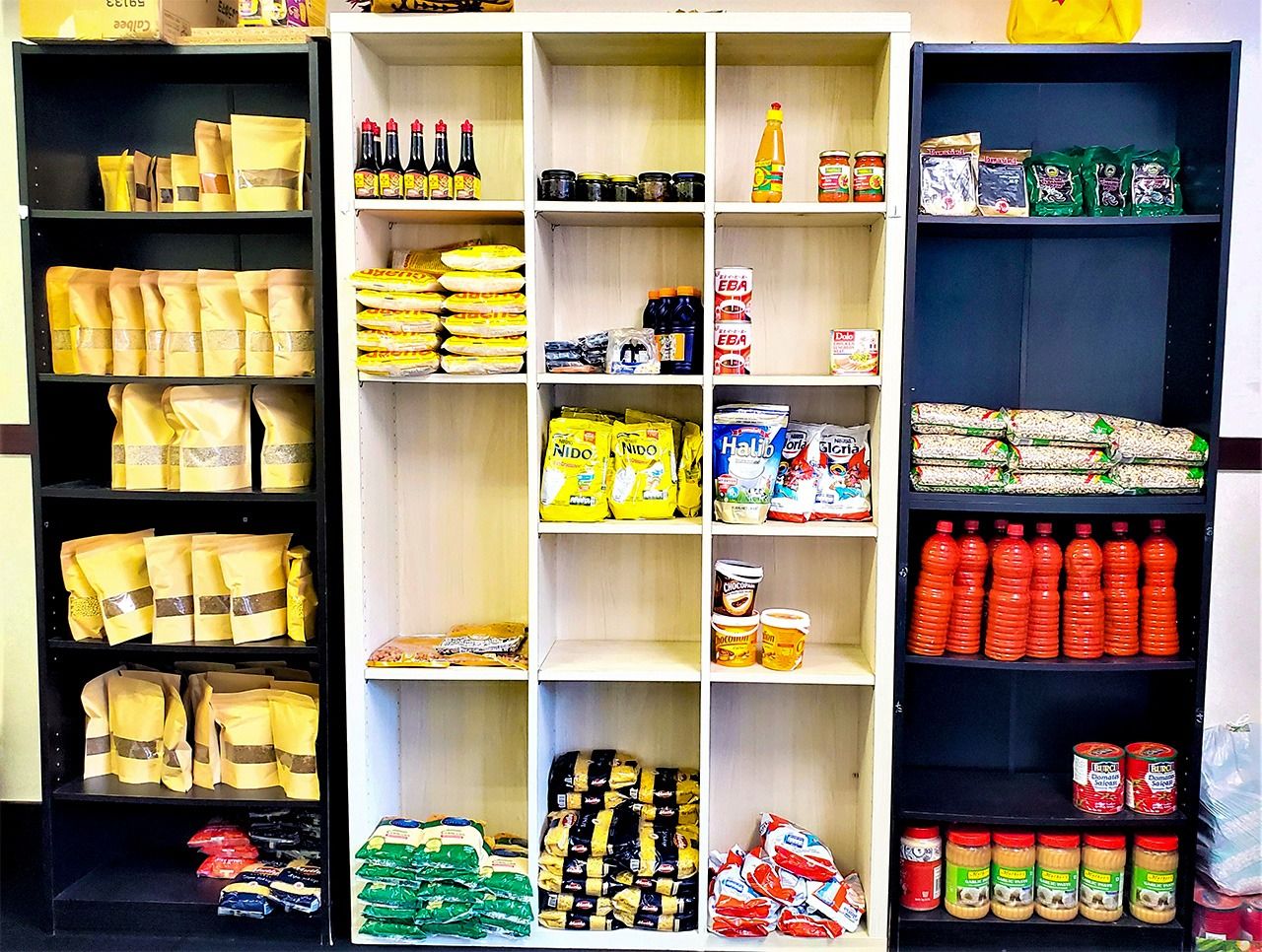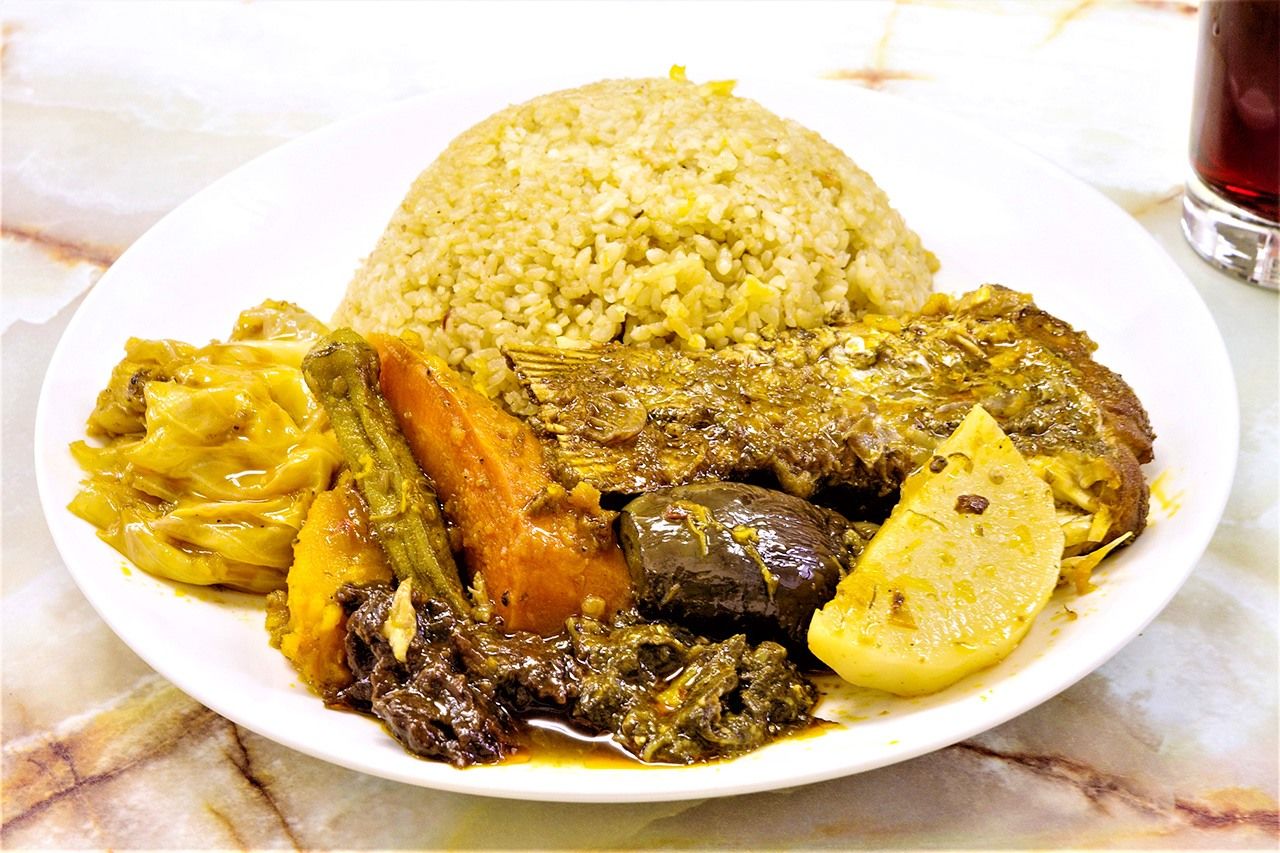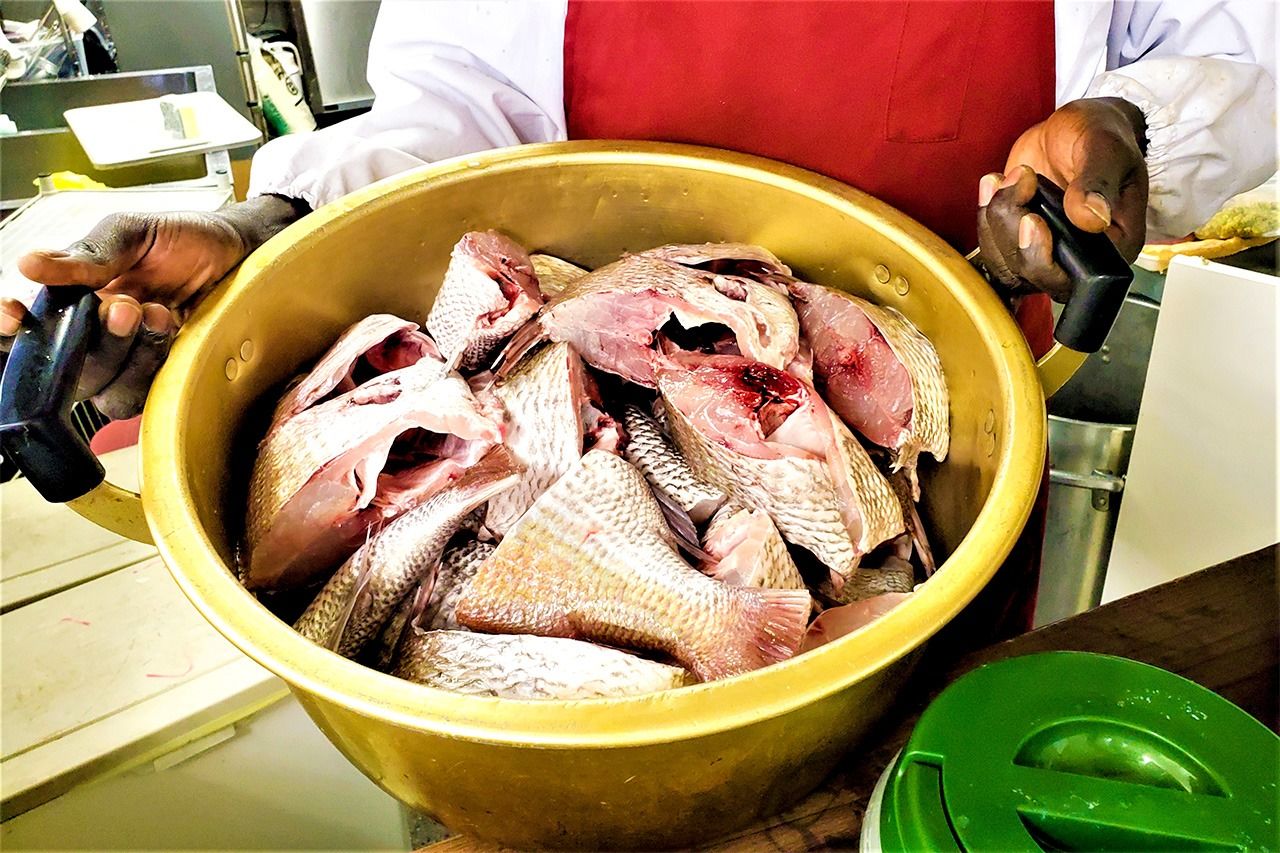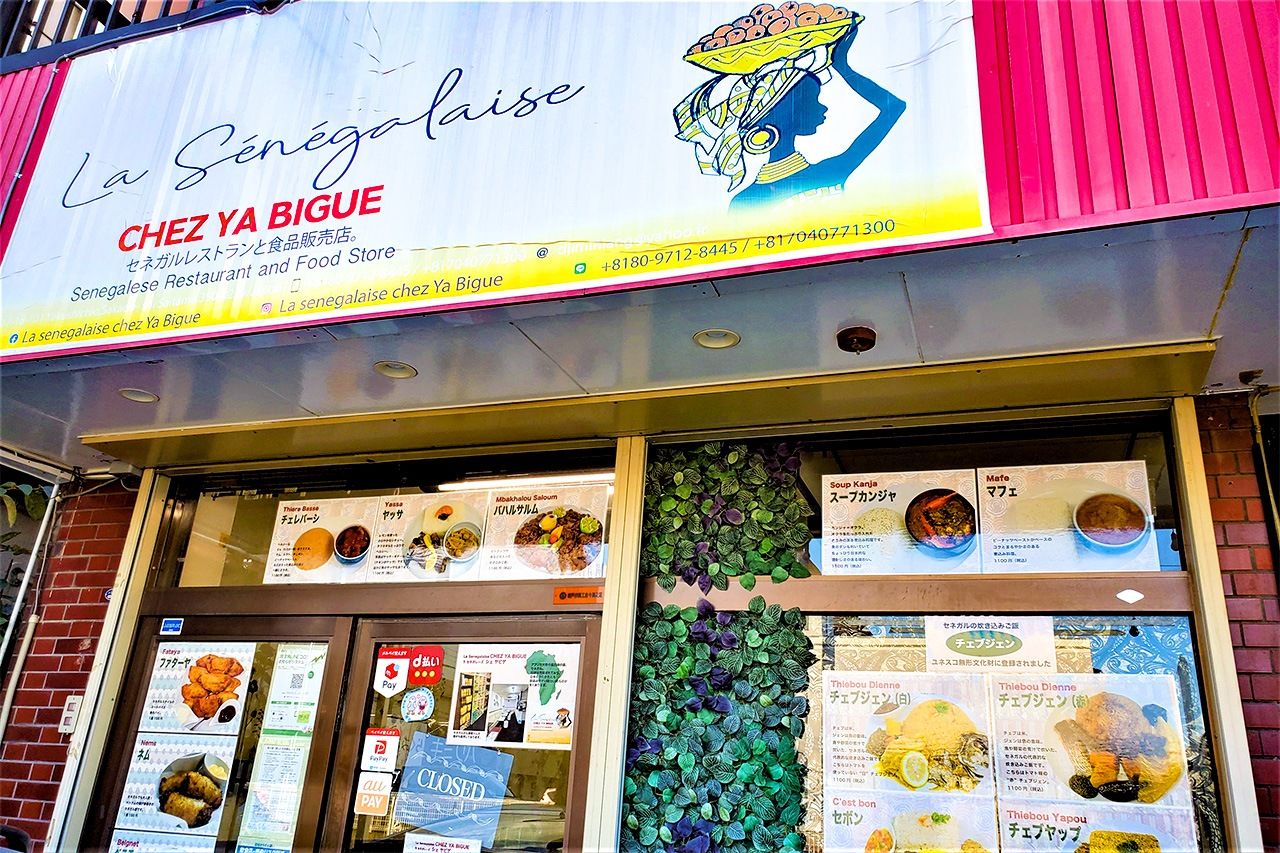
Restaurant La Senegalaise: A Haven of Senegalese Cooking in Central Saitama
Food and Drink Culture Global Exchange- English
- 日本語
- 简体字
- 繁體字
- Français
- Español
- العربية
- Русский
Bringing Senegalese Home Cooking to Japan
Back in 2008, long before the coronavirus halted my journalistic travels covering soccer abroad, a stint in Ghana introduced me to the joys of the West African dish jollof rice. Over my month-long stay in the country, the spicy mixture of vegetables, bone-in chicken, and rice cooked in tomatoes became a mealtime staple whether dining at a restaurant or street-side food stall.
I have since learned a little about the roots of the dish from African friends I have met in my work supporting refugees in Japan. Jollof, it seems, is the English name for the Wolof people, a major ethnic group in West Africa to whom the origins of the cuisine can be traced. Over time, jollof rice spread across the region, and in more recent times it has made the jump to North America and further afield.
Jollof rice is most closely associated with Senegal, where it is considered the national dish. Having only eaten the Ghanian version, I hunted online for a restaurant serving up authentic Senegalese cuisine. To my surprise, my search led me to central Saitama Prefecture on the very outskirts of the Tokyo metropolitan area. There I found Senegalese eatery La Senegalaise Chez Ya Bigue.
I gave the shop a call to see if jollof rice was on the menu. My inquiry was met with a moment of confusion by owner Nian Jinba, who after a pause responded in flawless Japanese, “Oh, you must mean thieboudienne. We only serve it on Sundays, so please come then.”
Thieboudienne? Unsure if we were talking about the same dish, when Sunday rolled around I hopped the Tōbu Tōjō Line and headed for Kita-Sakado Station in hopes of clearing up the mystery.
Arriving at the restaurant, I am met warmly by Nian, who wastes no time in writing out his name in kanji for me on a notepad, explaining that he has been in Japan for 15 years and took Japanese citizenship not long ago. Handing me the piece of paper, he informs me that a fortune teller insisted that the characters would ensure a bright future. Pointing out the two kanji for his given name, Jinba, he proudly proclaims: “They were taken from jinbaori, which were the garments that samurai wore into battle.”

The restaurant has a corner where customers can buy ingredients used in Senegalese cooking.
Nian says he first arrived in Japan as an eager, 19-year-old student. As one of four globe-trotting brothers, he desired to study somewhere other than in Europe and North America, as two of his siblings had, exclaiming that “everyone goes there.”
His youthful adventurism led him to Japan. Knowing it would be a challenge, he joined a language school and threw himself into studying Japanese. After the Great East Japan Earthquake in 2011, he took refuge in Osaka, but was soon back hitting the books. He entered Tokyo International University and put himself through college by working part time at restaurants and fast food outlets. After graduating, he stayed in Japan and took a position with a trading firm.
He happily toiled at the company for eight years, during which time he took Japanese citizenship. However, he eventually left to pursue his dream of running a Senegalese restaurant in Japan. “It was something I had longed to do,” he insists. “I figured it was now or never, so I went for it.”
Removed from the hustle and bustle of Tokyo, central Saitama may at first seem an unlikely locale for a North African eatery. However, Nian points out that a thriving Senegalese community has sprung up around Kita-Sakado and other nearby stations along the Tōbu Tōjō Line, with many African expats being employed at the numerous demolition firms in the area. Hearing friends and acquaintances pine for the flavors of home, Nian decided to take matters into his own hands.
Culinary Heritage
Since opening its doors in October 2021, La Senegalaise has attracted a steady flow of patrons from Senegal and other African countries. Among the regulars are staff from the Senegalese embassy in Tokyo, who eagerly journey over an hour by train to savor the familiar flavors, most notably the fish and rice dish thieboudienne, considered the national cuisine of Senegal.

Thieboudienne is a savory dish of stewed rice, fish, and vegetables.
Taking a seat, I order a plate of thieboudienne, anxiously reliving my culinary memories from Ghana. What arrives, though, is considerably different from my beloved jollof rice. There is the typical mound of seasoned rice. But instead of the familiar side of chicken, I am greeted by a piece of sea bream and an assortment of stewed vegetables like daikon, okra, and Japanese pumpkin.
Noticing my bewildered look, Nian politely describes how thieboudienne means rice and fish in the Wolof language. He points out that the dish has changed as it spread across West Africa, with each region developing its own version adapted to local tastes. “The ingredients and cooking techniques are different depending on where you are,” he explains. He notes that in Ghana and Nigeria, where English is spoken, the thieboudienne was dropped and replaced by jollof after the Wolof people.
Today, most renditions of the cuisine differ significantly from the original fish-based dish. Owing to its hardiness and versatility, jollof rice has started to garner attention beyond West Africa in places like North America, where it is steadily taking root.
Senegalese have mixed feelings about the spread of jollof rice, though. For them, there is no substitute for thieboudienne. In 2021, the dish was added to the UNESCO Intangible Cultural Heritage list, an honor that Nian says confirms the Senegalese version as the archetype. “It’s served at home, restaurants, and street stalls,” he declares. “Just about anywhere people gather for lunch.” However, he admits that he understands why Ghana and Nigeria want to take credit for the origins of jollof rice. “It’s an incredibly important part of people’s lives.”

Nian readies a batch of sea bream, which will serve as the base of thieboudienne.
Passing the Baton
Taking Nian’s words to heart, I tuck into the heaping plate of thieboudienne. It is exquisite. The mixture of sea bream and stewed vegetables infuse the rice with a distinct savory richness. I gobble down spoonful after spoonful, stopping only to enjoy a bite of the nearly whole vegetables. Although it is my first time to eat thieboudienne, I am struck at how familiar the flavor is; like an African version of the Japanese fish and rice dish, also made with sea bream, taimeshi.
Savoring each bite, I polish off the plate, wholly persuaded as to UNESCO’s recognition of it as the “original” jollof rice. Satiated, I turn to Nian, who instead of seeking my approval makes a jaw-dropping confession: “Actually, my wife and I won’t be managing the shop after today.” My joy at finding this oasis of Senegalese cuisine quickly turns to dismay. Closing the restaurant after a mere year in business?
Nian tells me that the couple have decided to return home with their young child, saying that his wife would like to put her skills as a licensed pharmacist to work in Senegal. I fight the urge to plead with him not to go. What about the restaurant’s loyal customers?
All is not lost, though. Nian says he has secured the services of a new chef, a woman already boasting a reputation in the local Senegalese community for her skills in the kitchen. Much to the relief of patrons, La Senegalaise will remain open. Nian adds that he will be making frequent trips between Senegal and Japan and intends to remain involved in the venture in a supporting role.
For the time being, the rich aromas of thieboudienne wafting from the tiny restaurant on weekends will continue to call to Senegalese expats and others with promises of West African culinary delights.
La Senegalaise Chez Ya Bigue
- First Floor, Ōsakaya Daiichi Building, 17-18 Yakushi-chō, Sakado, Saitama Prefecture
- Tel.: 090-3806-0204
- Open 2:00 pm to 9:00 pm
- Closed Mondays
- 5 minutes’ walk from Kita-Sakado Station; thieboudienne only served on Sundays
(Originally published in Japanese. Banner photo: Nian Jinba, left, and his wife and child in the kitchen at La Senegalaise Chez Ya Bigue before returning home to Senegal. All photos © Kumazaki Takashi.)
